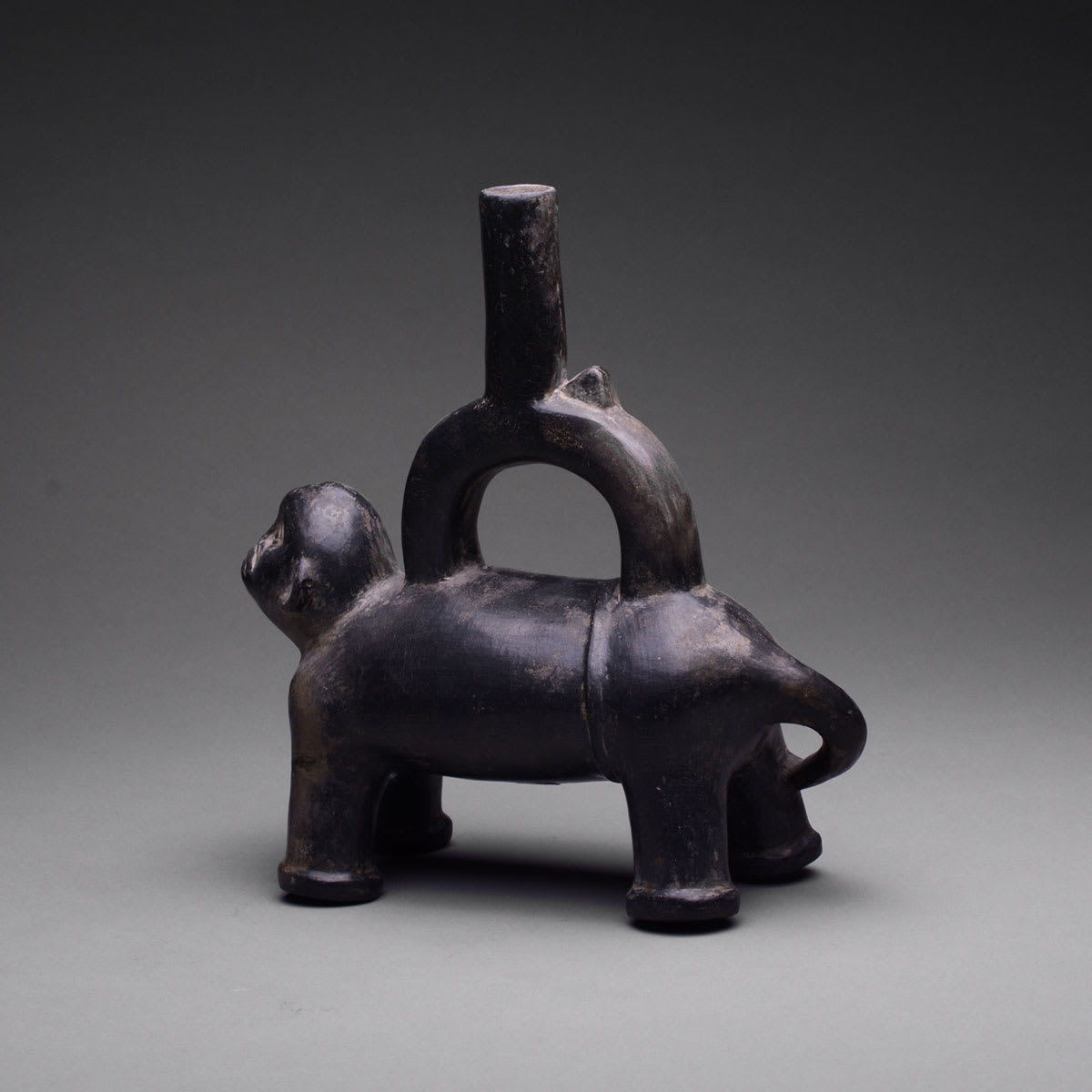Chimu Blackware Monkey Stirrup Vessel, 800 CE - 1200 CE
Terracotta
height 23.5 cm
height 9 1/4 in
height 9 1/4 in
PF.1874
Further images
The Chimu culture arose around 800 A.D. and flourished until the Incan conquest about six hundred years later. Their civilization was centered at their capital Chan Chan, about 300 miles...
The Chimu culture arose around 800 A.D. and flourished until the Incan conquest about six hundred years later. Their civilization was centered at their capital Chan Chan, about 300 miles north of Lima, literally meaning “Sun Sun,” the largest Pre-Columbian city in Peru estimated to contain almost one hundred thousand citizens. The Chimu believed the sea, which they called “Ni,” was the origin of life, a theory also proposed by modern science and evolution. Thanks to their sea-faring skills, the Chimu were able to survive, nestled in between the desert and the sea. The sea was everything to them: an endless supply of food and the source of inspiration for their most imaginative myths, legends, and artwork. Agriculture was also vital, and the Chimu drew up a vast number of irrigation works demonstrating immense engineering skill, some of which are still in use today. Today, aside from the astounding mud ruins of Chan Chan remarkably well preserved in the heat of the desert, the Chimú are perhaps best known for their distinctive black glazed pottery influenced by their predecessors: the Moche.
This odd little creature, almost human in his expression, is in fact a monkey. Monkeys were not native to the coastal regions of Peru, but it is believed they were imported from Ecuador to the north and kept as pets, or trained to harvest fruit from trees. The ring that encircles this fellow's waist suggests his captive state. Very likely he was buried to amuse his ancient owner through eternity. With his naive charm, he delights us today as well. Our pleasures links us in a very human way with the vanished world that created him.
This odd little creature, almost human in his expression, is in fact a monkey. Monkeys were not native to the coastal regions of Peru, but it is believed they were imported from Ecuador to the north and kept as pets, or trained to harvest fruit from trees. The ring that encircles this fellow's waist suggests his captive state. Very likely he was buried to amuse his ancient owner through eternity. With his naive charm, he delights us today as well. Our pleasures links us in a very human way with the vanished world that created him.
Literature
V5







